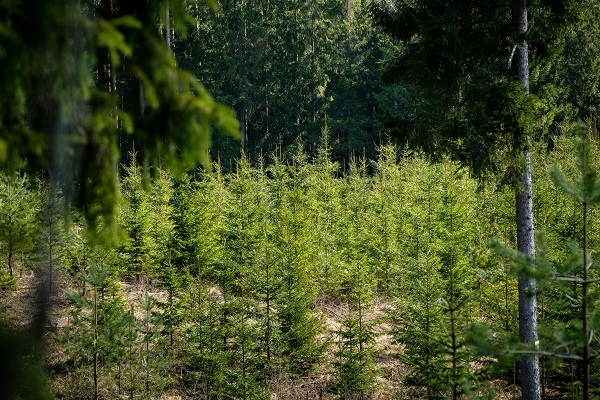A Study Confirms that Trunk Spirals are Effective against Damage Caused by Cervids
In order to reduce the damage caused by cervids to young trees during winter, JSC “Latvia's State Forests” (LVM) takes measures to protect young stands on a regular basis. For trees higher than 1.5 m, the most important thing is to protect their trunk; therefore, LVM has been using plastic tree trunk protection spirals as one of the methods already since 2011.
In order to evaluate the current practice, in 2019 LVM, in cooperation with scientists of the Latvian State Forest Research Institute “Silava” launched a study to measure the effectiveness of protective spirals, their resistance to changing weather conditions and their impact on the quality of growing tree trunks and tree health.
It is important to apply protective spirals in the right way
The following was done in the course of the study: pine stands equipped with protective spirals were inspected, tree measurements were performed, the condition of the trees, as well as the functionality of the spiral were assessed. The results of the study convincingly demonstrate the effectiveness of this protective measure – the trees equipped with protective spirals were damaged on average by 3%, while the unprotected trees – by 25%. The main reason why 3% of protected trees were damaged is the incorrect application of protective spirals. Over time, the durability of the spirals decreases; however, the protective spirals, when properly installed, continue to perform their function effectively also after five years. In young stands higher than 6 m, cervids no longer cause significant bark damage. At this stage and age, peel bark is formed on the pine trunks, which protects the tree trunk from damage caused by the external environment, forest fires as well as damage caused by animals, including cervids. When the tree height reaches 6 metres, the protective spirals must be removed from the stands, otherwise the spirals are classified as plastic waste that pollutes forest.
Protective coils are harmless to tree trunks
At the beginning of the study, LVM foresters provided information on the cases when algae overgrowth is formed under the cover of protective spirals, litterfall accumulates, there are insects of different stages of their development living there, and subsequently effusion occurs. The study paid special attention to these aspects that could affect the health of trees. The results showed that the application of protective spirals does not affect the trunk, does not reduce the quality of the wood, does not prevent the formation of bark even in cases when effusion and algae growth develop under the protective spiral. Before the tree trunk reaches the diameter of the spiral, litterfall accumulates under it. Later, litterfall become a favourable living and breeding environment for invertebrates, many of which are a food base for birds.
Protecting young stands from damage caused by animals is particularly important during winter, when animals no longer have extensive sources of nutrients and elk, red deer and roe deer bite the tops of young trees or tear off the bark of their trunks, thus adversely affecting the future growth of the tree. This year, the protection of young stands in Latvia’s State forests is planned in an area of 25 000 hectares.




